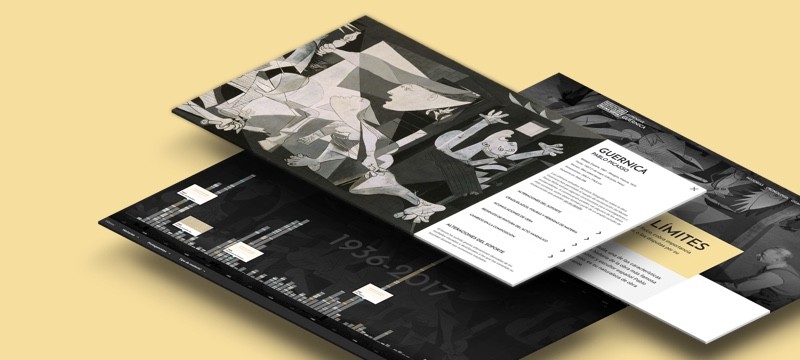The Bombing of Gernika
Picasso’s Guernica conserves and casts collective memory around one of the most tragic bombings during the Civil War. On 26 January 1937, the German Condor Legion and Italian air force spent hours bombing the Basque city, under orders from Franco’s army, reducing it to rubble and causing a huge number of casualties.
The bombing of Gernika lingers in the memory, above all through the proliferation of images conserved, as one of the symbols of violence in the Civil War. Far from a strategic site in the conflict, Gernika was immediately understood as a rehearsal of “total war”, whereby violence is indiscriminately meted out on civilians. As an image, reproduced and divulged in films, newspapers, photographs and posters, it has risen up as a metaphor for modern warfare and a symbolic portent of every war to come. In terms of fatalities, the Basque government announced a death toll of 1,654, although the figure varies according to the source. After taking control of Gernika, the Spanish national army first and then the France Regime took pains to deny their involvement in the bombings, blaming the Republican government by making use of partisan media and manipulating images. During the Dictatorship, the deaths remained unacknowledged and all records were wiped in an attempt to erase the episode from memory. The aerial attack on the city of Gernika sparked Picasso’s work for the Spanish Pavilion at the Paris International Exhibition in 1937.
The previous January, the government of the Republic had already commissioned a painting, but it wasn’t until shortly after the bombing, on 1 May, that Picasso began painting the large canvas he would ultimately call Guernica. The artist had been profoundly affected by the news and images surfacing in Paris from the Basque Country via international correspondents and French newspapers such as Ce Soir, Regards and L’Humanité. The Spanish print media also ran numerous front pages and articles with the horrors of the bombings, for instance Mundo Gráfico, which showed the faces of the displaced population and the new landscape of cities and towns in ruins.
The bombings, with their threat figuratively silhouetted in planes soaring in the sky, and the horrific consequences and victims formed the iconography of a specific genre of war propaganda, appearing time and again on flyers and posters. In fact, Josep Renau used a photograph of Gernika being bombed in the creation of one of his photomontages for the Spanish Pavilion, thus reflecting the contemporary nature of events in his swift and epic denouncement.

